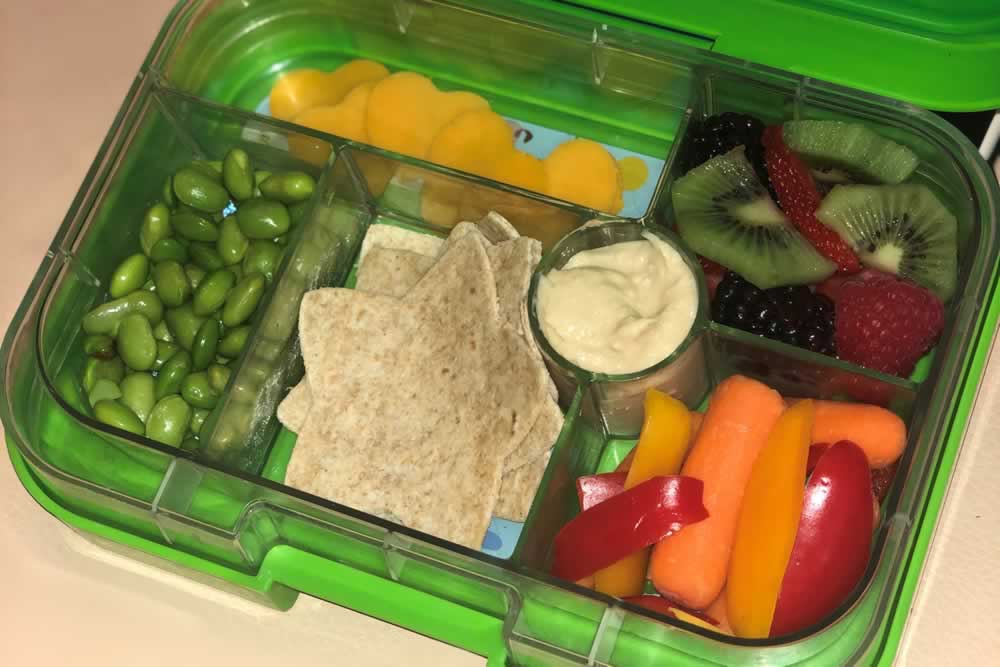
What to Pack and How to Include Kids in the Process
KNOXVILLE, Tenn. – Parents are preparing their children for the successful start of a new school year. On their minds is the question of what to pack in their child’s lunch box. Kristen Johnson, University of Tennessee Extension assistant professor and nutrition specialist, shares ideas to make packing lunches easier for busy parents.
“If you do choose to pack your child’s lunch for school, focus on including a variety of healthy foods, like fruits, vegetables, whole grains, lean proteins, and low-fat or fat-free dairy products,” says Johnson. “Parents can also refer to USDA’s MyPlate as a guide to help choose the foods to include in a child’s meal.”
– Fruit and vegetables provide a burst of color in your child’s lunchbox and are packed with vitamins, minerals and fiber. Include selections that are easy for your child to eat, such as fresh items cut into sticks or bite-size pieces, fruit cups packed in 100% juice or unsweetened applesauce.
– Use lunch time as an opportunity to incorporate whole grains into your child’s diet as well. Prepare sandwiches or wraps with whole-grain bread and tortillas. Choose whole-wheat pasta for spaghetti or pasta salads. Whole-grain crackers and air-popped popcorn can be crunchy additions as well.
– Incorporate lean protein foods like lean chicken, pork, beef or seafood and prepare sandwiches and wraps with low-sodium lean deli meats. Beans are also a great way to add protein and fiber to your child’s lunch meal. Incorporate black beans into a quesadilla or include a variety of beans in a pasta salad.
– Send low-fat or fat-free dairy products such as milk, yogurt and cheese as part of your child’s meal.
Johnson adds that parents can create excitement around lunchtime by cutting sandwiches, wraps, fruits and other foods into fun shapes, picking out a new lunchbox or divided lunch container, or thinking of themes for lunch meals. The expert advises parents to include meals for your child’s lunch in weekly meal plans and shopping lists as well.
“Your child may be more likely to eat the foods in their lunchbox if they are involved in the planning process, so allow children to help plan meals, find new recipes, or choose new foods to try in their lunch during the upcoming week,” continues Johnson. Depending on the age of a child, they may be able to help with packing lunch or may even complete this on their own.
Janie Burney, professor and nutrition and food safety specialist with UT Extension, also adds that parents need to ensure their child’s lunch remains safe to eat as it is carried from home to the school cafeteria. She suggests using an insulated lunch bag with one ice pack on top of perishable foods and one ice pack below those foods. “If parents are sending hot dishes, like soup or chili, it’s important to use an insulated thermos to keep the food warm. Before placing food in the thermos, fill it with boiling water, leaving the water for a few minutes. Empty the water, and then add the hot food to the thermos. This will help ensure the food remains hot in the thermos until your child’s lunchtime,” says Burney.
Johnson also suggests visiting the What’s Cooking USDA Mixing Bowl Website at https://whatscooking.fns.usda.gov/ for a variety of healthy, kid-friendly recipes.
For additional help and programs specifically about healthy choices, contact the family and consumer sciences agent at your local county Extension office. You can also visit the UT Extension Family and Consumer Sciences website at fcs.tennessee.edu.
Through its mission of research, teaching and extension, the University of Tennessee Institute of Agriculture touches lives and provides Real. Life. Solutions. ag.tennessee.edu.